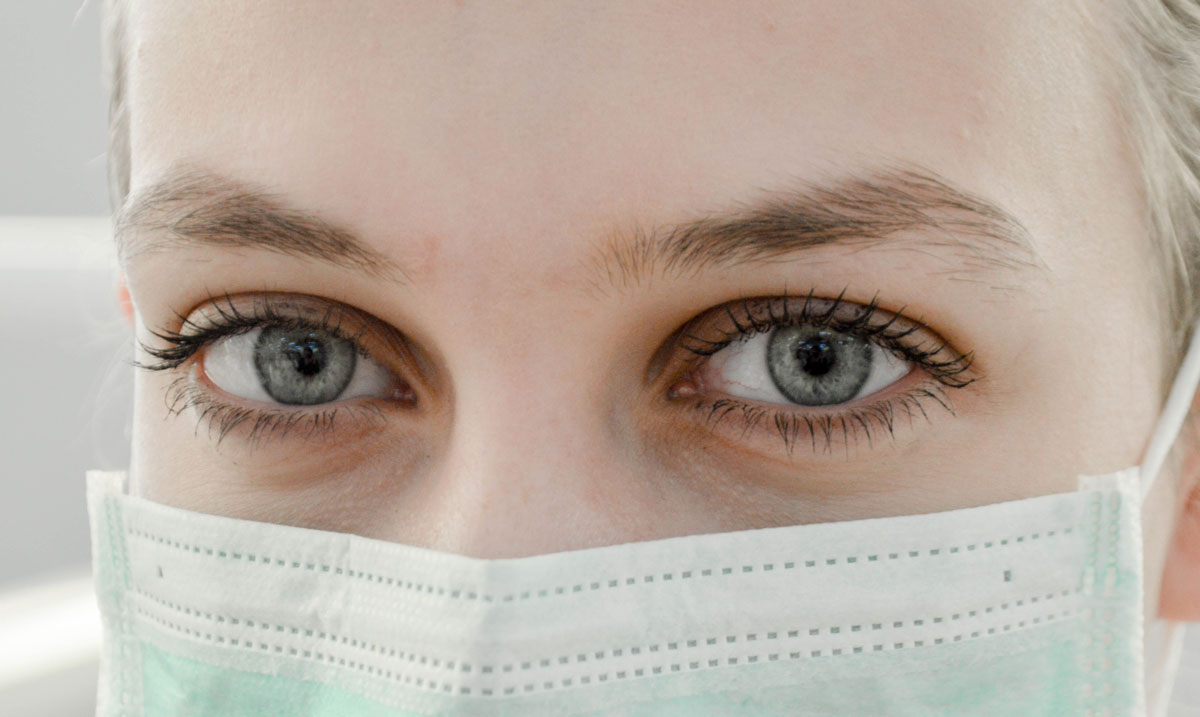 |
More than two-thirds of healthcare workers reported mask-associated dry eye symptoms. Photo: Ani Kolleshi on Unsplash. |
The pandemic has had a deleterious impact on daily life in a variety of ways, including the ongoing use of masks and other personal protection equipment—particularly for individuals working in healthcare. As a result, there has been an increased interest in understanding the negative effects of regular mask usage. In a recent prospective, cross-sectional study, researchers sought to better understand the prevalence of self-reported mask-associated dry eye in healthcare professionals and the possible risk factors of this condition.
The study authors created a web-based, self-administered questionnaire that included 12 questions about mask-associated dry eye and its risk factors. It was sent to 437 healthcare professionals; of these, 333 were included in the study. The data collected included demographic and clinical characteristics. Participants who reported at least one symptom of dry eye were deemed to potentially have mask-associated dry eye and were asked to undergo a clinical evaluation.
Findings revealed that the prevalence of self-reported mask-associated dry eye among individuals working in healthcare was 70%. The remaining 30% of participants said they did not feel any discomfort while wearing a mask. Additionally, 19.2% noted that they already had at least one symptom of dry eye before they started using masks. However, 90.6% of these individuals also reported that their complaints associated with dry eye were exacerbated after they began wearing masks during the pandemic.
Overall, 81.9% of the study participants with mask-associated dry eye symptoms said their work performance was affected. Of the participants who had self-reported mask-associated dry eye and agreed to a clinical examination (n=195), 30.7% had aqueous-type dryness with staining on the ocular surface with fluorescein. In terms of potential risk factors, the researchers reported that having at least one of the symptoms of dry eye while not wearing a mask and older age were both associated with the condition.
This research suggests, according to the study authors, a high prevalence of self-reported mask-associated dry eye among healthcare professionals, which was substantiated by clinical findings in a number of participants. These results highlight the importance of addressing this issue with help from eyecare providers.
“It is likely that COVID-19 will be in our lives for years to come, which would only make the problems that the healthcare professionals face, such as the mask-associated dry eye in question, worse if not addressed,” they concluded. “Hence, any symptoms of healthcare professionals to that effect should not be ignored during the period of pandemic in particular. Implementation of measures to reduce the symptoms related to dry eye will likely positively affect the work performance of healthcare professionals.”
Dag U, Çaglayan M, Öncül H, et al. Mask-associated dry eye syndrome in healthcare professionals as a new complication caused by the prolonged use of masks during COVID-19 pandemic period. Ophthalmic Epidemiol. March 18, 2022 [Epub ahead of print]. |


